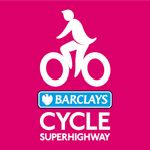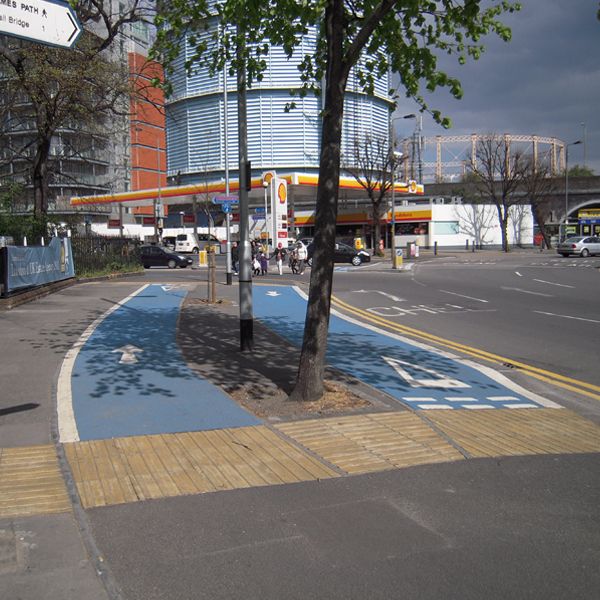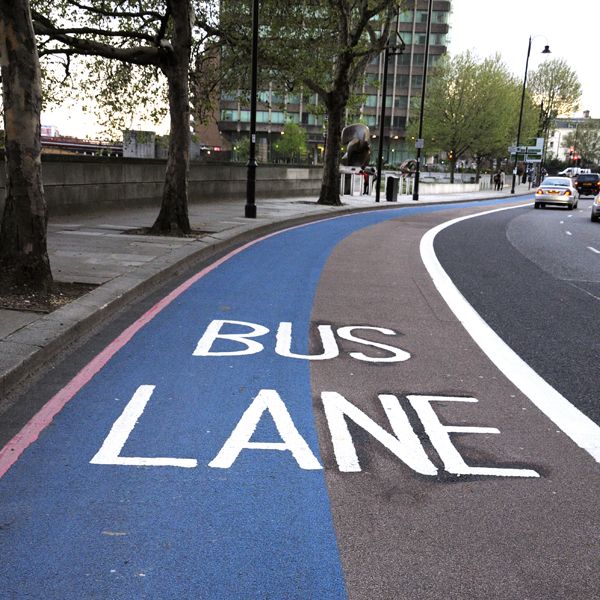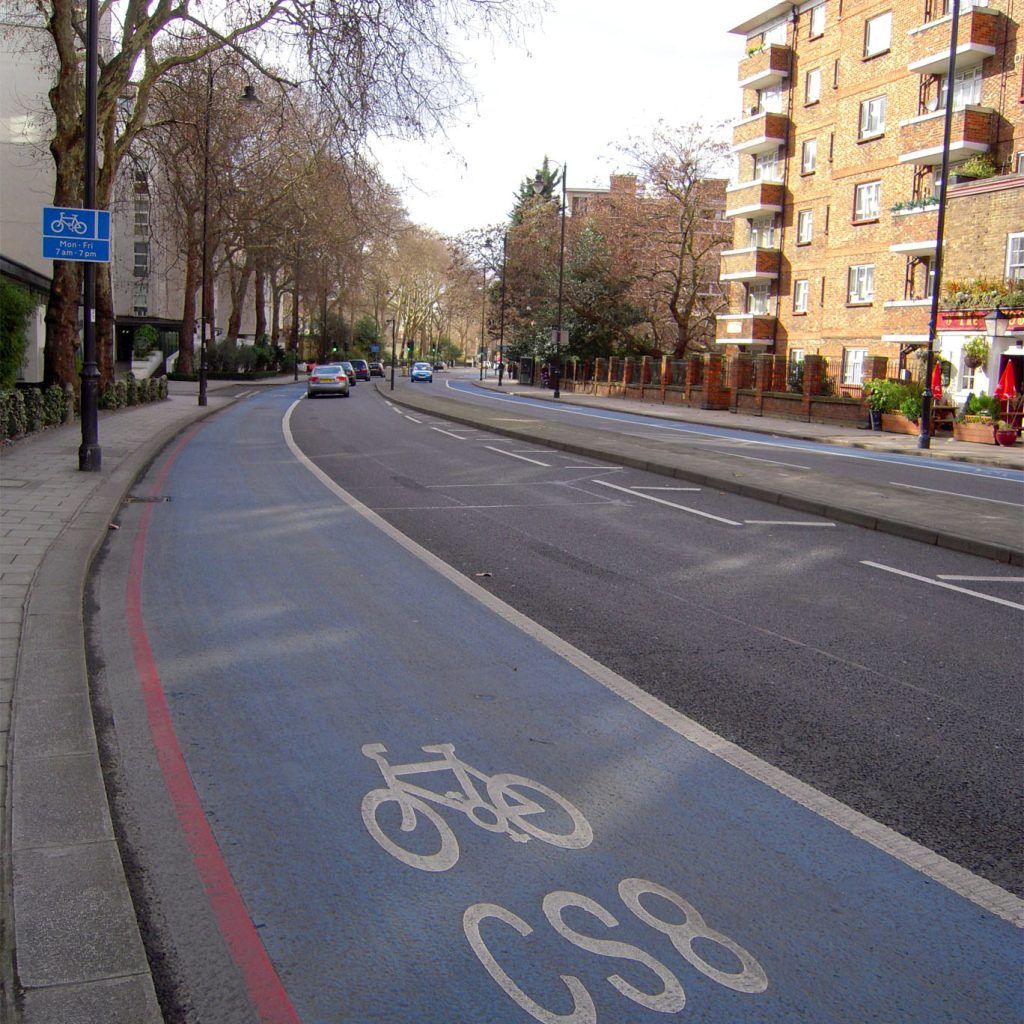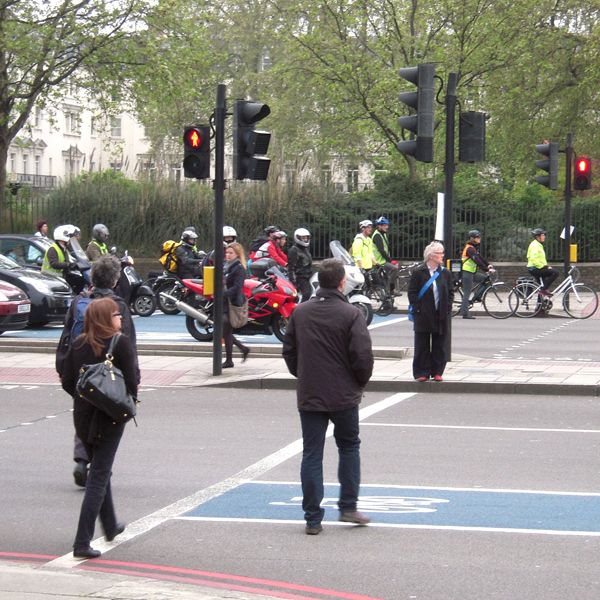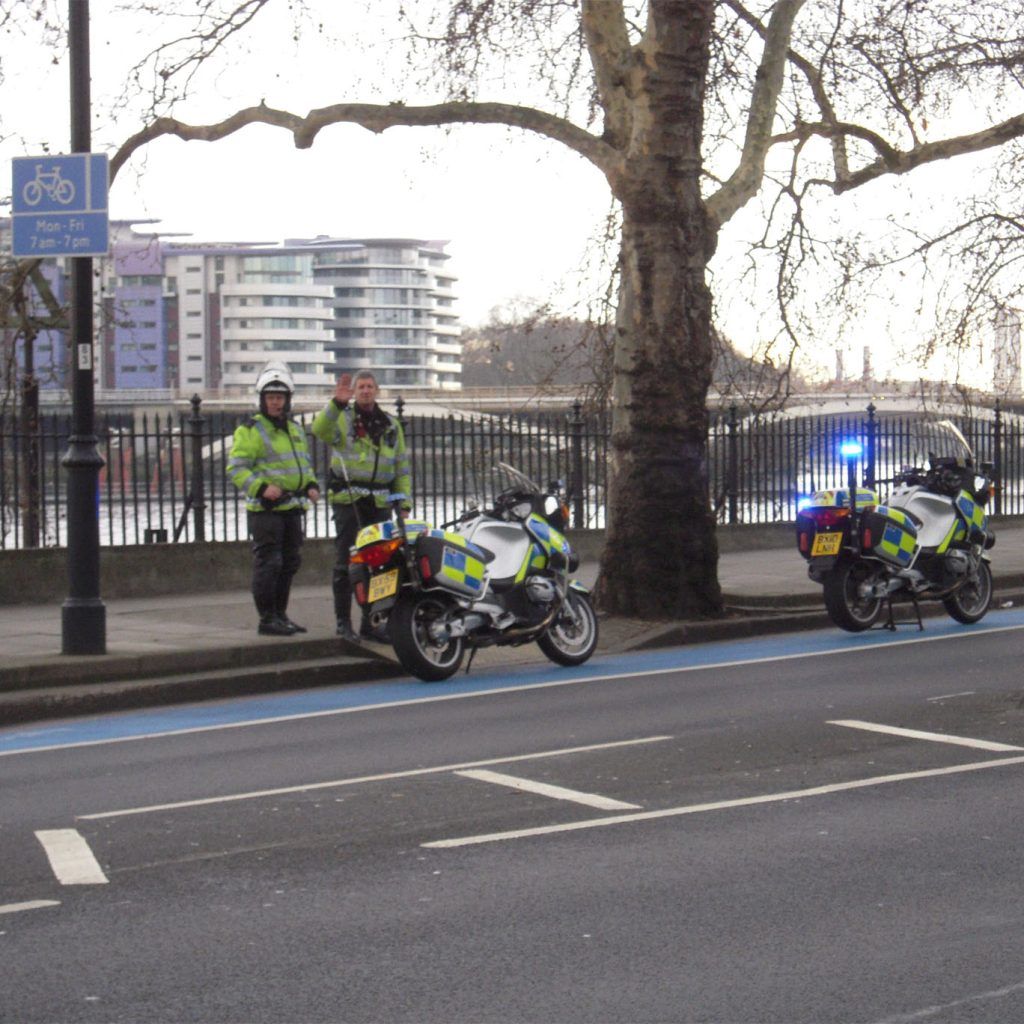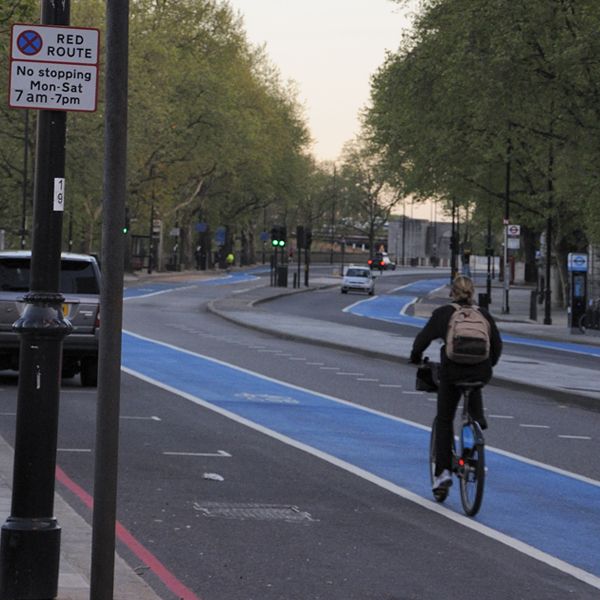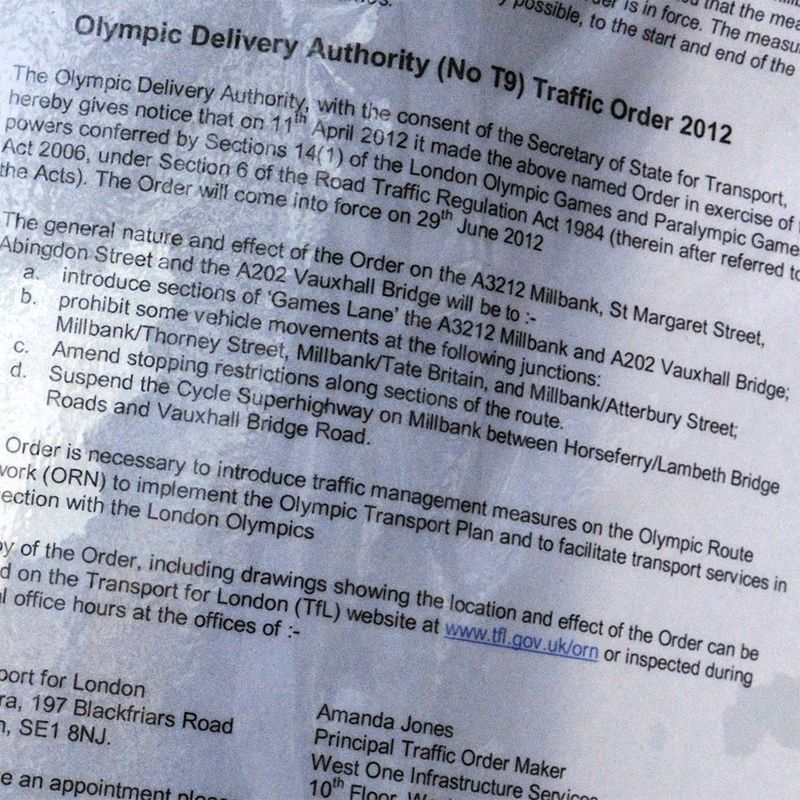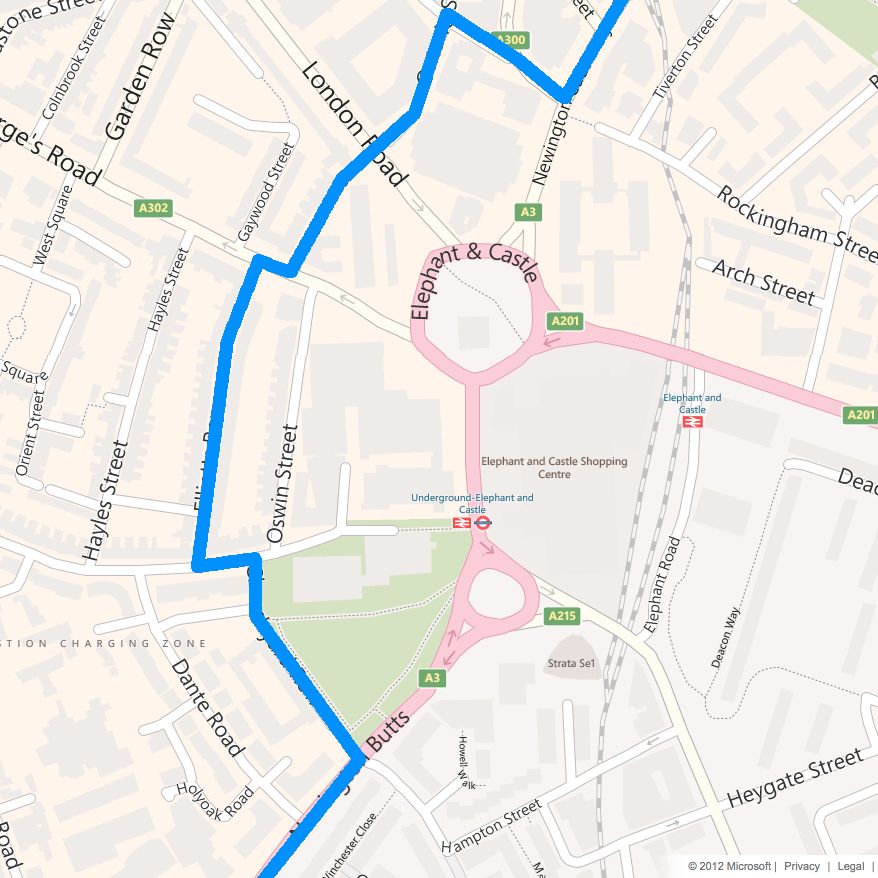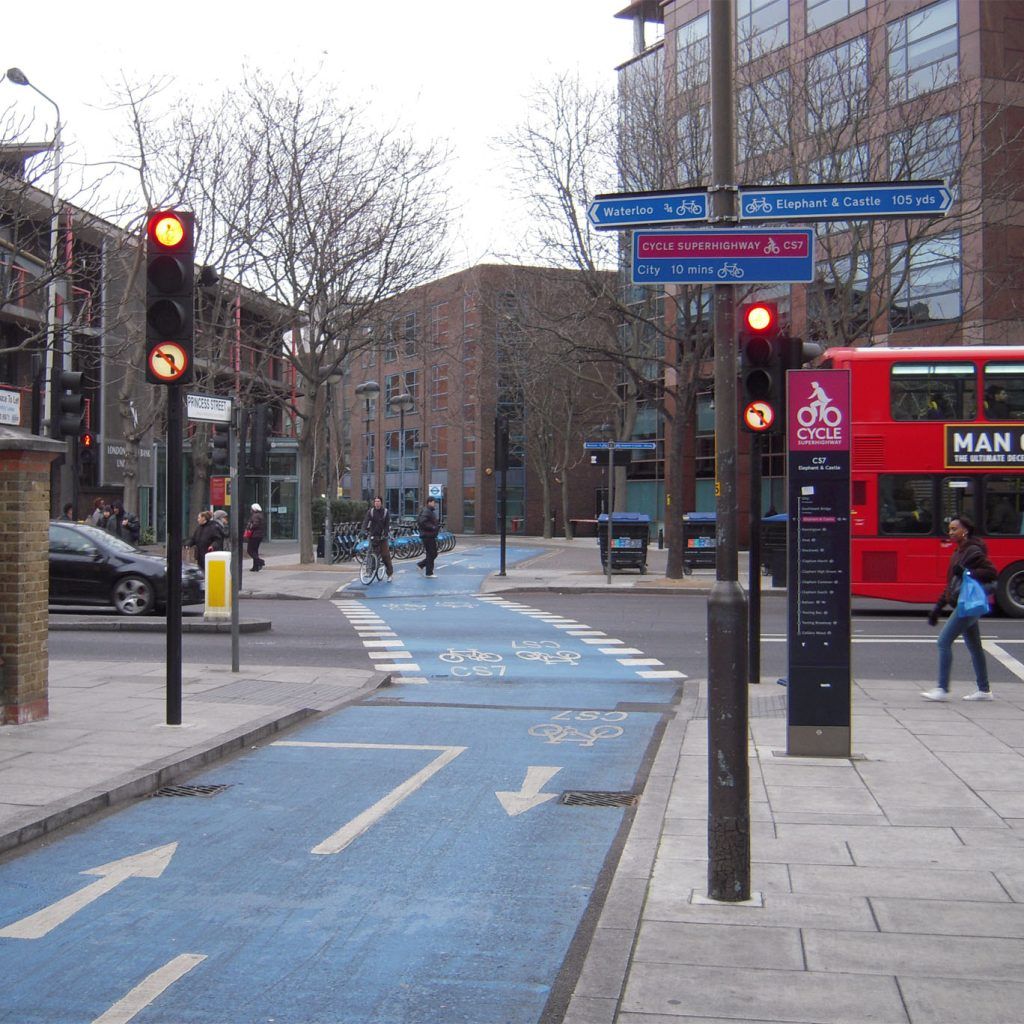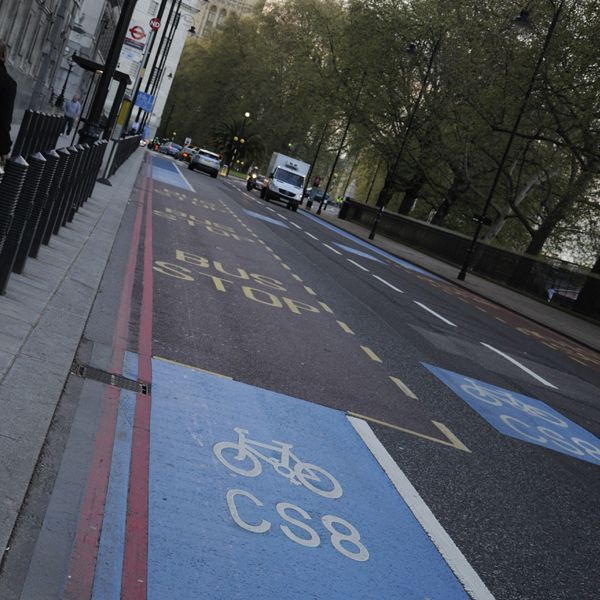IGF board member Beatrice Stude is currently in the UK and brings back insights that can also be applied to the cycling situation in Austria and Vienna. Today the fourth part of “Lessons from Britain”:
Cyclists need fast connections – a main cycling network in the city. On through roads for motorised private transport, where speeds of over 30 km/h prevail, cyclists need separate lanes. London has recognised this, but theory and practice unfortunately drift far apart. Vienna should also focus on the development of a superior cycle path network, but should not copy London’s mistakes.
The Cycle Superhighways in London
The main idea for the Cyclesuperhighways (CS) in London was and is to establish fast cycle routes for commuters. But letʻs take a first look at the wording they use: A highway is by definition a main road, especially one connecting major towns or cities; the prefix super implies that is an exceptional, extreme form of a highway.
With that in mind you will propably be disappointed when starting to explore the CSs in London. And here is why:
Cyclingsuperhighways
- The CSs has opening hours, mostly from 7am to 7pm. Before and after that motorists are allowed to park there. Ever heard of a motorway having closing times? Iʻm sure people living near the M1 would love that and enjoy a good nightʻs sleep.
- At crossings with main roads you sometimes need to press a button at the signal light to continue your journey eg. on the CS7 at Elephant & Castle. Iʻd love to see motorists having to do that too.
- The CS (eg. the CS8 along Grosvenor Road) is wide enough to be very convenient for other cyclists to overtake, but at main crossings with traffic lights, the CS narrows noticeably or even ends surprisingly and there is a gap between the CS and the ASZ (Advanced Stop Zone) that you are often unable to reach as a cyclist when lights are red.
- The CSs which are not along main roads make the cyclist feel like a rabbit dodging and turning corners in slow motion. This zigzaging forces the frequent commuter to find a better and therefore faster route himself, eg. CS7 around Elephant & Castle.
- The CS is sometimes just painted on buslanes, which often leads to a ridiculous game of overtaking between the cyclists and buses if one is not among the faster cyclists. In any event, both types of cyclists have to squeeze themselves through a bus stopping at a bus stop and the motorists bumper to bumper at peak hours on the lanes next to it.
There are, nevertheless advantages which need to be mentioned:
Cyclingsuperhighways
- The bright blue colour of the CS is respected by most motorists who do not usually drive on it, unlike the not very visible green of the few cycle paths.
- The bright colour and therefore presence on the streets also helps to raise cycling awareness.
- It might help commuters to change their commuting habits in favour of cycling as an easy way to get started. Indeed, the signsposts with important points and travelling time to these points is quite helpful and you notice that the design follows the same rules as the tube and is easy to understand.
- The CS is helpful for routes you do not travel on everyday, like short business trips to outer London.
- The CS routes are almost gapfree which usually cannot be said for the common cycle paths, which seem to have no connection.
IG Fahrrad became Radlobby Wien.
More Lessons from Britain
- #1 – I vote with my bike
- #2 – Love London, Go Dutch
- #3 – Boris Bikes move London
- #5 – Reclaim the streets
- #6 – Cycleparadise Oxford
